- Benefits of Growing Apple Trees
- 1. Fresh and Nutritious Fruit
- 2. Attractive Landscape Feature
- 3. Environmental Benefits
- 4. Educational Opportunities
- 5. Cost Savings
- 6. Culinary Versatility
- 7. Emotional Well-being
- Choosing the Right Species for Your Climate
- Cold Climate:
- Mild Climate:
- Hot Climate:
- Popular Apple Tree Varieties
- 1. Granny Smith
- 2. Red Delicious
- 3. Golden Delicious
- 4. Gala
- 5. Honeycrisp
- 6. Fuji
- 7. Pink Lady
- Planting and Caring for Apple Trees
- 1. Choose the Right Location
- 2. Prepare the Soil
- 3. Planting
- 4. Watering
- 5. Mulching
- 6. Pruning
- 7. Fertilizing
- 8. Pest and Disease Control
- 9. Harvesting
- Pruning and Training Techniques for Apple Trees
- 1. Pruning Basics
- 2. Training young apple trees
- 3. Pruning mature apple trees
- 4. Training and pruning espalier apple trees
- Common Pests and Diseases Affecting Apple Trees
- Pests:
- Diseases:
- Harvesting and Storing Apples from Your Tree
- 1. Testing for Ripeness
- 2. Harvesting Apples
- 3. Storing Apples
- 4. Check and Use Apples Regularly
- Frequently Asked Questions about Apple Tree Care
- 1. How often should I water my apple tree?
- 2. How should I fertilize my apple tree?
- 3. How do I prevent pests and diseases from damaging my apple tree?
- 4. When is the best time to prune my apple tree?
- 5. How long does it take for an apple tree to bear fruit?
- 6. Can I grow an apple tree in a container?
- 7. How should I protect my apple tree from frost?
- 8. How do I harvest apples from my apple tree?
- 9. How do I control the size of my apple tree?
- 10. Can I graft different apple varieties onto one tree?
- Question-answer:
- What are the different species of apple trees?
- What is the best variety of apple tree for growing in a garden?
- How tall do apple trees typically grow?
- How long does it take for an apple tree to bear fruit?
- What are some common diseases that can affect apple trees?
- Can apple trees be grown in containers or pots?
- What is the best time of year to plant an apple tree?
- Video: How to Easily Grow Apples, Complete Growing Guide
An apple tree is a popular and rewarding addition to any garden. It not only provides beautiful blossoms in the spring, but also delicious fruits in the fall. Whether you are a seasoned gardener or just starting out, growing an apple tree can be a fulfilling and enjoyable experience.
There are several species of apple trees that can be grown in the garden, each with its own unique characteristics. The most common species is the Malus domestica, which includes a wide range of apple varieties. Some popular varieties include Granny Smith, Golden Delicious, and Fuji. These varieties differ in terms of taste, texture, and color, allowing you to choose the ones that suit your preferences.
Growing an apple tree requires proper care and maintenance. It is important to choose a suitable location with full sun exposure and well-drained soil. Apple trees also need regular pruning to maintain their shape and improve fruit production. Additionally, proper watering and fertilizing are essential for the health and growth of the tree.
“The best time to plant an apple tree is twenty years ago. The second best time is now.” – Chinese Proverb
In conclusion, growing an apple tree in your garden can be a rewarding experience that allows you to enjoy the beauty of blossoms and the taste of fresh fruits. With a wide range of species and varieties to choose from, you can find the perfect apple tree to suit your preferences. By providing proper care and maintenance, you can ensure the health and productivity of your apple tree for years to come.
Benefits of Growing Apple Trees
Growing apple trees in your garden can provide a range of benefits. From enhancing the beauty of your landscape to having a source of fresh fruit, here are some advantages of growing apple trees:
1. Fresh and Nutritious Fruit
One of the main benefits of growing apple trees is having access to fresh and nutritious fruit. Apples are packed with vitamins, minerals, and antioxidants that are beneficial for your overall health. By growing your own apple trees, you can enjoy the taste and nutritional benefits of homegrown apples.
2. Attractive Landscape Feature
Apple trees are not only practical but also add beauty to your garden. Their lush foliage, beautiful flowers, and vibrant fruit can enhance the aesthetics of your landscape. Apple trees can be grown as standalone features, or they can be incorporated into mixed fruit orchards or garden borders.
3. Environmental Benefits
Apple trees provide several environmental benefits. They help improve air quality by absorbing carbon dioxide and releasing oxygen. Additionally, they serve as habitats for various bird species and beneficial insects, contributing to biodiversity in your garden.
4. Educational Opportunities
Growing apple trees can be a valuable educational experience, especially if you have children. It provides an opportunity to teach them about plant life cycles, the importance of sustainable gardening practices, and the value of growing your own food.
5. Cost Savings
By growing your own apple trees, you can save money in the long run. Instead of buying apples from the grocery store, you can enjoy a bountiful harvest from your own backyard. This can help reduce your grocery expenses and provide a sense of self-sufficiency.
6. Culinary Versatility
Apples are incredibly versatile in the kitchen. From baking pies and making applesauce to creating sauces and chutneys, there are endless culinary possibilities with homegrown apples. By growing your own apple trees, you’ll have a ready supply of delicious fruit for all of your culinary experiments.
7. Emotional Well-being
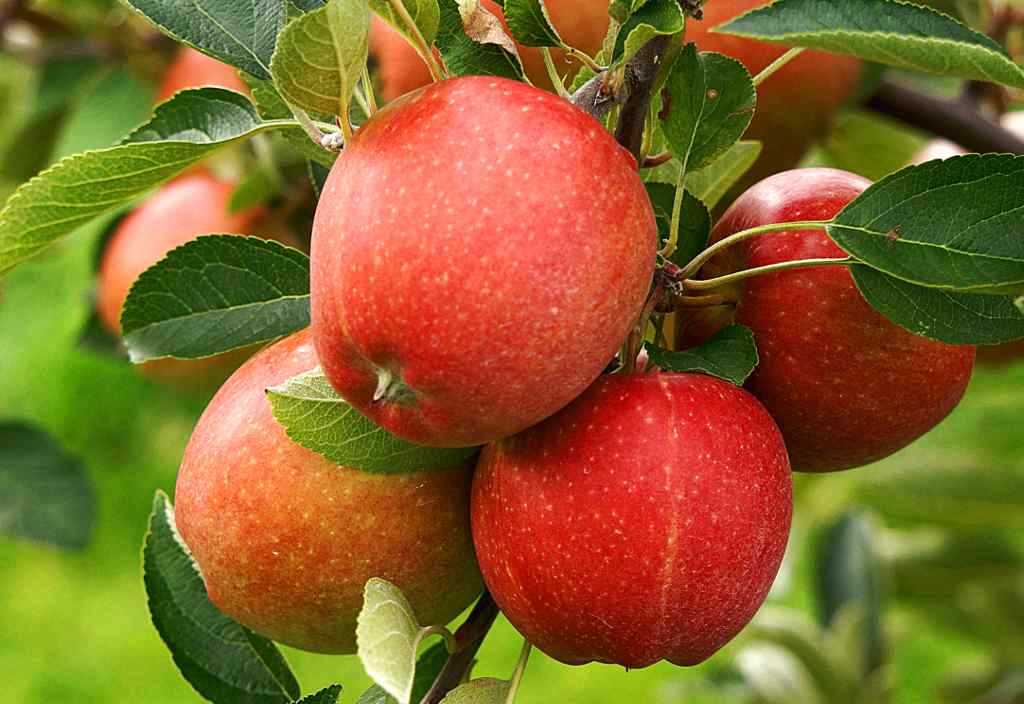
Gardening, including growing apple trees, has been shown to have positive effects on mental health and emotional well-being. Spending time outdoors, connecting with nature, and nurturing plants can help reduce stress, improve mood, and provide a sense of accomplishment and fulfillment.
Overall, growing apple trees brings numerous benefits, from health and environmental advantages to cost savings and emotional well-being. Consider adding apple trees to your garden and enjoy the rewards they bring.
Choosing the Right Species for Your Climate
When selecting an apple tree for your garden, it is important to consider the climate in which you live. Different apple tree species have different temperature and moisture requirements, and choosing the right species for your climate will greatly increase your chances of success.
Cold Climate:
If you live in a cold climate with harsh winters, it is important to choose apple tree species that are hardy and can withstand low temperatures. Some cold-hardy apple tree species include:
- McIntosh: This popular apple tree species is known for its cold hardiness and ability to thrive in northern regions.
- Haralson: Another cold-hardy apple tree species, Haralson can withstand freezing temperatures and is a good choice for colder climates.
- Northern Spy: This apple tree species is also well-suited to cold climates and produces crisp, tart apples.
Mild Climate:
If you live in a mild climate with moderate temperatures year-round, you have a wider range of apple tree species to choose from. Some apple tree species that do well in mild climates include:
- Gala: Known for its sweet flavor, Gala apple trees thrive in mild climates and produce medium-sized, red-blushed apples.
- Golden Delicious: This popular apple tree species can tolerate mild climates and produces large, yellow apples.
- Jonagold: A hybrid apple tree species, Jonagold is well-suited to mild climates and produces large, crisp apples with a sweet-tart flavor.
Hot Climate:
If you live in a hot climate with long, hot summers, it can be a challenge to grow apple trees. However, there are some apple tree species that are better adapted to hot climates:
- Anna: This heat-tolerant apple tree species performs well in hot climates and produces sweet, juicy apples.
- Dorsett Golden: Another apple tree species suited to hot climates, Dorsett Golden produces medium-sized, yellow apples.
- TropicSweet: This apple tree species is specifically bred for hot climates and can tolerate high temperatures.
Remember, even if you choose a species that is well-suited to your climate, it is still important to provide proper care and maintenance for your apple tree to ensure its success. Regular watering, fertilizing, and pruning will help your apple tree thrive and produce a bountiful harvest.
Popular Apple Tree Varieties
Apple trees come in a wide range of varieties, each with its own unique characteristics and flavors. Here are some popular apple tree varieties:
1. Granny Smith
The Granny Smith apple is known for its bright green skin and tart, crisp flesh. It is a popular choice for baking and cooking due to its ability to hold its shape and flavor.
2. Red Delicious
The Red Delicious apple is one of the most well-known apple varieties. It has a deep red skin and a sweet, juicy flavor. It is often enjoyed fresh or used in salads, but it is not recommended for cooking or baking as it tends to become mushy.
3. Golden Delicious
The Golden Delicious apple has a yellowish-green skin and a sweet, mellow flavor. It is a versatile apple that can be used for eating fresh, cooking, or baking.
4. Gala
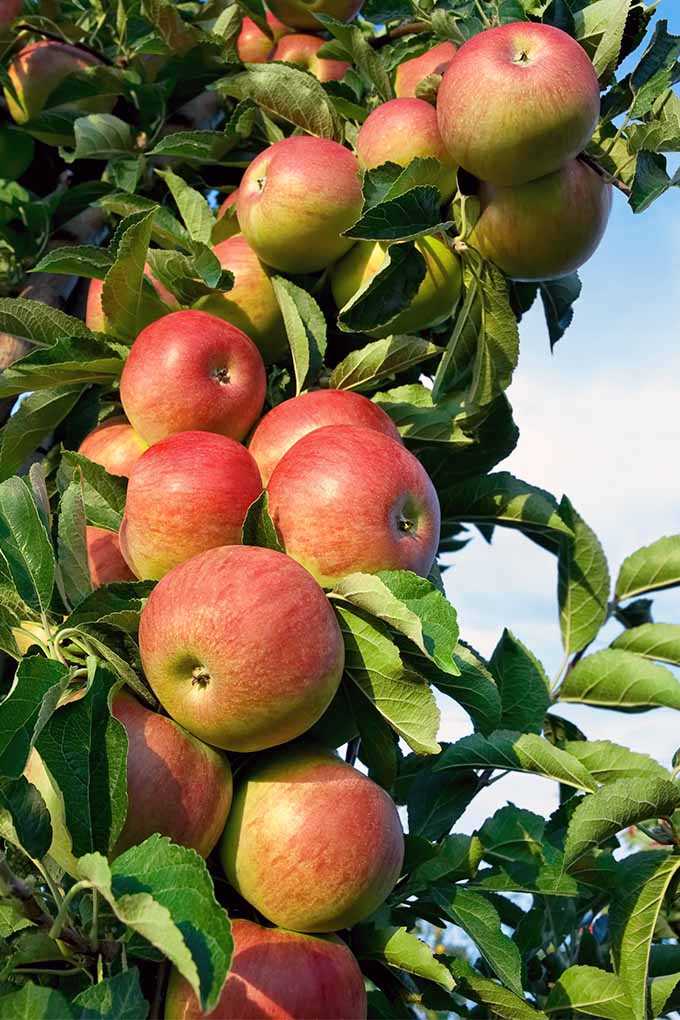
Gala apples have a crisp texture and a sweet, mild flavor. They are great for eating fresh and can also be used in salads or for cooking and baking.
5. Honeycrisp
Honeycrisp apples are known for their explosive crispness and sweet-tart flavor. They have a juicy texture and are perfect for eating fresh.
6. Fuji
The Fuji apple is a Japanese variety that is known for its sweet and crisp taste. It has a yellow-green skin with red streaks and is excellent for both eating fresh and cooking.
7. Pink Lady
Pink Lady apples have a distinctive pinkish-red skin and a sweet-tart flavor. They are crisp and juicy, making them a popular choice for eating fresh or using in salads.
These are just a few examples of popular apple tree varieties. When selecting an apple tree for your garden, consider the flavor, texture, and uses of the apples to find the variety that best suits your needs.
Planting and Caring for Apple Trees
Planting and caring for apple trees requires careful attention to detail to ensure healthy growth and abundant fruit production. Follow these steps to ensure success:
1. Choose the Right Location
Apple trees need at least six hours of direct sunlight each day, so choose a location in your garden that receives ample sunlight. The soil should be well-draining and fertile.
2. Prepare the Soil
Before planting, prepare the soil by removing any weeds or grass from the planting area. Dig a hole that is twice the width of the root ball and just as deep.
3. Planting
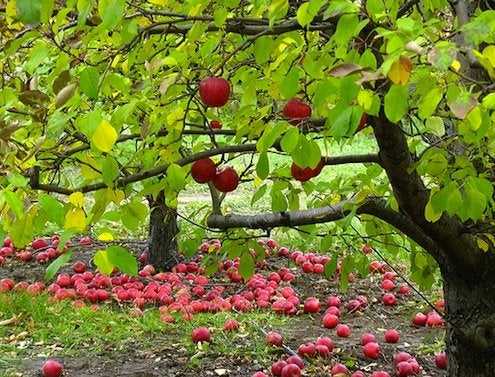
Place the apple tree in the center of the hole, ensuring that the root system is spread out evenly. Fill the hole with soil and gently firm it around the base of the tree, being careful not to damage the roots.
4. Watering
After planting, water the tree thoroughly to help settle the soil and ensure good root-to-soil contact. Water regularly, especially during dry periods, to keep the soil moist but not waterlogged.
5. Mulching
Apply a layer of organic mulch around the base of the tree, but make sure to keep the mulch a few inches away from the trunk to prevent rot. Mulching helps retain moisture, suppress weeds, and regulate soil temperature.
6. Pruning
Prune apple trees during the dormant season to remove any dead, damaged, or crossing branches. Pruning helps improve air circulation, light penetration, and overall tree health.
7. Fertilizing
Apply a balanced fertilizer specifically formulated for fruit trees in early spring before the tree starts to blossom.
8. Pest and Disease Control
Regularly inspect your apple tree for signs of pests and diseases, such as aphids, apple maggots, or fungal infections. Take appropriate measures, such as using organic insecticides or fungicides, to prevent and manage infestations.
9. Harvesting
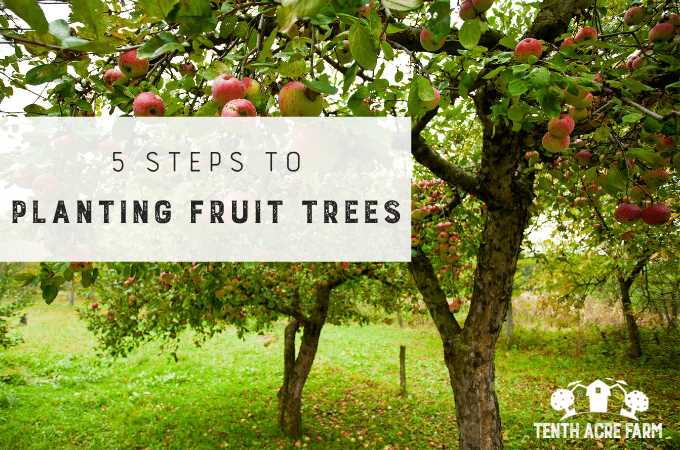
Monitor the progress of your apple tree’s fruit development and harvest the apples when they are ripe. Ripe apples will easily detach from the tree when gently twisted or lifted upwards.
By following these guidelines, you can successfully plant and care for apple trees in your garden, allowing you to enjoy the fruits of your labor for years to come.
Pruning and Training Techniques for Apple Trees
Pruning and training are essential tasks for maintaining the health and productivity of apple trees. Proper pruning and training techniques not only help shape the tree but also promote better light penetration and air circulation, which can prevent diseases and improve fruit quality.
1. Pruning Basics
- Pruning should be done during the dormant season, typically in late winter or early spring before the buds start to break.
- Remove any dead, diseased, or broken branches. These can be a source of infection and can hinder the tree’s overall growth.
- Thin out crowded branches to allow better air circulation and light penetration.
- Always make clean cuts using sharp, sanitized pruning tools to minimize damage and the risk of disease transmission.
2. Training young apple trees
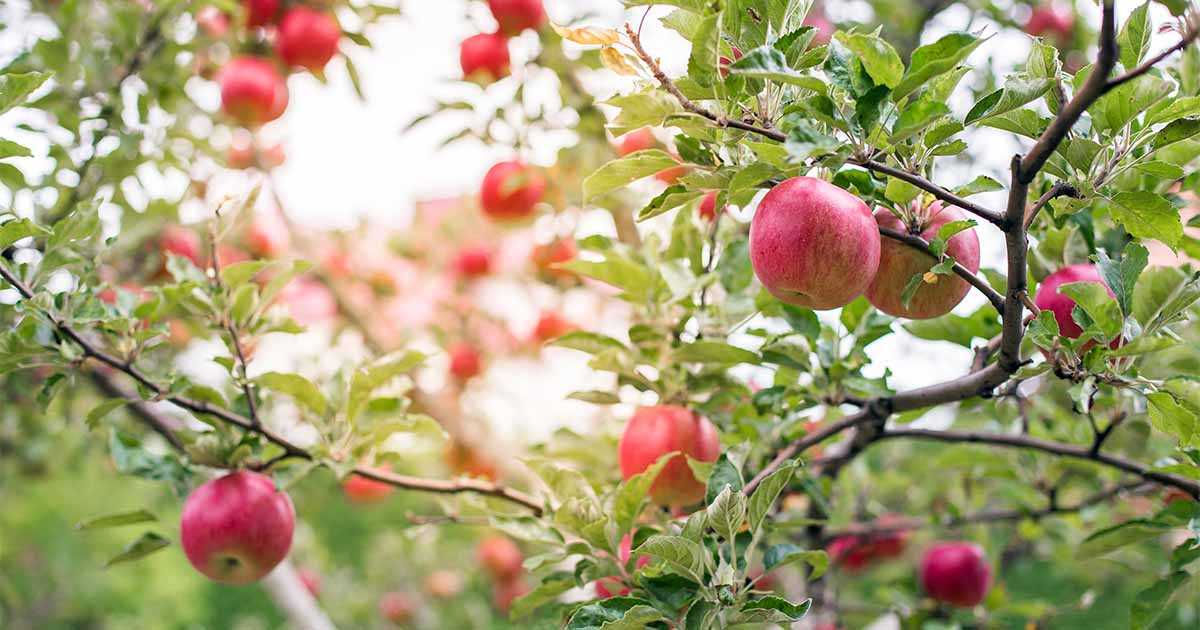
- Start training young apple trees in their first year of growth.
- Select a central leader branch as the main trunk and remove any competing branches that may hinder its growth.
- Prune to create a well-balanced framework with evenly spaced branches. This will ensure a sturdy structure that can support heavy fruit loads in the future.
- Regularly check the tree’s growth and adjust the training as necessary.
3. Pruning mature apple trees
- Maintain the central leader structure and remove any crossing or rubbing branches.
- Open up the canopy by removing excess branches to allow better light penetration and air circulation.
- Manage the height of the tree by selectively removing branches from the top.
- Consider the fruiting habit of the apple tree. Some varieties produce fruit on spurs, while others on shoots. Prune accordingly to encourage fruit production.
4. Training and pruning espalier apple trees
- Espalier apple trees are trained to grow flat against a wall or support structure.
- Prune and train the tree to create horizontal branches, using stakes and wire to guide the growth.
- Regularly trim and tie new growth to maintain the desired shape and encourage fruit production along the branches.
- Keep an eye out for pests and diseases, as the close proximity to a wall or support structure may create a more favorable environment for them.
Remember, pruning and training are ongoing tasks that should be done regularly to keep apple trees in optimal health and productivity. Consult a professional or reference books for specific recommendations on pruning and training techniques for different apple tree varieties.
Common Pests and Diseases Affecting Apple Trees
Apple trees are susceptible to a variety of pests and diseases that can negatively impact their growth and fruit production. It is important for apple tree owners to be aware of these common issues in order to effectively prevent or treat them. Below are some of the most common pests and diseases that affect apple trees:
Pests:
- Apple Maggot: The apple maggot is a small, black fly that lays its eggs in developing fruit. The larvae feed on the fruit, causing it to become deformed and rotten. To prevent apple maggot infestation, you can use sticky traps or apply insecticides.
- Codling Moth: The codling moth is a common apple tree pest. The larvae of this moth burrow into the fruit, causing it to become discolored and infested. You can control codling moth infestations by using pheromone traps, applying insecticides, or removing affected fruit.
- Aphids: Aphids are small insects that can infest apple trees, sucking sap from the leaves and causing them to curl and distort. They also excrete a sticky substance called honeydew, which can attract ants and lead to the growth of sooty mold. Regularly inspecting your apple trees and applying insecticidal soap can help control aphid populations.
- Apple Sawfly: Apple sawflies are small, yellow or green larvae that feed on apple tree leaves. Infested trees may have defoliated branches and reduced fruit production. Pruning affected branches and applying insecticides can help control apple sawfly populations.
Diseases:
- Apple Scab: Apple scab is a fungal disease that affects apple trees, causing dark, scaly lesions on the leaves, fruit, and twigs. To prevent apple scab, regularly remove fallen leaves and fruit, and apply fungicides when necessary.
- Cedar Apple Rust: Cedar apple rust is a fungal disease that affects apple trees. It causes rusty brown lesions on leaves and fruit, leading to reduced fruit production. Removing nearby cedar trees, which act as alternative hosts, can help control cedar apple rust.
- Fire Blight: Fire blight is a bacterial disease that can affect apple trees, causing wilting, blackened branches, and oozing cankers. Pruning affected branches and applying antibiotics can help control fire blight.
- Powdery Mildew: Powdery mildew is a common fungal disease that affects apple trees, causing a white, powdery coating on the leaves and fruit. Regularly pruning and spraying fungicides can help prevent and control powdery mildew.
Regular monitoring, proper tree care, and timely intervention can help prevent and manage these common pests and diseases, ensuring healthy and productive apple trees.
Harvesting and Storing Apples from Your Tree
Harvesting apples from your tree is an exciting time for every gardener. It’s the moment when you can finally enjoy the fruits of your labor and taste the deliciousness of homegrown apples. Here are some tips on how to harvest and store your apples to ensure that they stay fresh and tasty for a longer period of time.
1. Testing for Ripeness
Before you start harvesting, it’s important to check if your apples are ripe. The color of the fruit and its firmness can indicate whether they are ready to be picked.
- Ripe apples usually have vibrant color and are firm to the touch.
- Gently twist the apple, and if it comes off easily from the tree, it is ready for picking.
- Try not to pull or tug on the apple, as this can damage the tree and the fruit.
2. Harvesting Apples
When harvesting apples, it’s best to use a pair of clean, sharp pruning shears or an apple picker tool. Follow these steps to ensure a successful harvest:
- Begin by gently twisting the apple to see if it comes off easily.
- If the apple is resistant, use the pruning shears or apple picker tool to cut the stem about half an inch from the top of the fruit.
- Be careful not to drop or bruise the apple, as this can affect its quality.
- Continue picking the ripe apples, leaving the unripe ones on the tree to mature.
3. Storing Apples
Proper apple storage is essential to maintain their freshness and flavor for a longer time. Follow these guidelines when storing your harvested apples:
- Sort your apples by size and condition. Remove any damaged or overripe apples, as they can cause the others to spoil faster.
- Place the apples in a cool, dark location such as a root cellar or a refrigerator. Ideally, the temperature should be around 32 to 40 degrees Fahrenheit (0 to 4 degrees Celsius).
- Store the apples in a well-ventilated container or crate to prevent them from rotting.
- Avoid storing apples near other fruits or vegetables, as they release ethylene gas that can accelerate ripening and spoilage.
4. Check and Use Apples Regularly
Regularly inspect your stored apples to ensure that none of them are rotting or spoiling. Remove any damaged apples immediately to prevent the spread of decay to the other fruits.
As for using the stored apples, incorporate them into your recipes, make fresh apple juice, or enjoy them as a healthy snack. The well-stored apples should last for several months, allowing you to enjoy the taste of your own homegrown fruit throughout the year.
Frequently Asked Questions about Apple Tree Care
1. How often should I water my apple tree?
In general, apple trees require about 1-1.5 inches of water per week. However, the exact watering needs may vary depending on factors such as weather conditions and soil type. It is important to provide deep, thorough watering rather than frequent shallow watering.
2. How should I fertilize my apple tree?
Fertilizing apple trees is crucial for their growth and fruit production. It is recommended to perform a soil test to determine the specific nutrient requirements of your tree. Generally, a balanced fertilizer with a ratio of nitrogen, phosphorus, and potassium (NPK) of 10-10-10 or 14-14-14 can be applied in early spring and mid-summer.
3. How do I prevent pests and diseases from damaging my apple tree?
Regular inspection and preventive measures are important to keep your apple tree healthy. Some common pests that can affect apple trees include aphids, apple maggots, and codling moths. You can use organic insecticides or horticultural oils to control them. It is also advisable to prune the tree regularly to improve air circulation and reduce the risk of diseases such as apple scab and powdery mildew. Additionally, make sure to clean up fallen leaves and fruits to prevent the spread of diseases.
4. When is the best time to prune my apple tree?
The ideal time to prune an apple tree is during late winter or early spring, before new growth begins. Pruning during this time allows you to shape the tree, remove dead or diseased branches, and improve its overall structure. It is important to avoid pruning during the dormant period, as it may leave the tree susceptible to pests and diseases.
5. How long does it take for an apple tree to bear fruit?
The time it takes for an apple tree to bear fruit can vary depending on the variety and the conditions in which it is grown. In general, most apple trees begin to produce fruit between 3 to 5 years after planting. However, some dwarf or miniature varieties may start bearing fruit earlier, while certain standard varieties may take longer.
6. Can I grow an apple tree in a container?
Yes, it is possible to grow an apple tree in a container. However, it is important to select a dwarf or miniature variety that is suitable for container gardening. The container should have good drainage and be large enough to accommodate the tree’s root system. Regular watering and fertilizing are essential for container-grown apple trees, and they may require additional support such as staking.
7. How should I protect my apple tree from frost?
Protecting apple trees from late spring frosts is crucial to prevent damage to flowers and young fruit. You can use various methods such as covering the tree with frost blankets or using smudge pots to create heat. Additionally, planting the tree in a location that is less prone to frost pockets can help reduce the risk of frost damage.
8. How do I harvest apples from my apple tree?
Apples should be harvested when they are fully mature and have reached their desired color. To harvest, gently twist or roll the apple until it separates from the branch. Be careful not to damage the spur or neighboring fruits during the process. It is advisable to harvest apples in dry weather and store them in a cool, humid place to maximize their shelf life.
9. How do I control the size of my apple tree?
If you want to control the size of your apple tree, you can use pruning techniques such as heading cuts, thinning cuts, and training branches. Regular pruning helps maintain the tree’s shape, control its height, and improve fruit production. Additionally, choosing rootstocks with dwarfing or semi-dwarfing characteristics can help limit the size of the tree.
10. Can I graft different apple varieties onto one tree?
Yes, it is possible to graft different apple varieties onto one tree. This technique is known as apple tree grafting and allows you to have multiple apple varieties on a single tree. Grafting can be done during late winter or early spring when the trees are dormant. It is important to choose compatible varieties and follow proper grafting techniques to ensure successful integration.
Question-answer:
What are the different species of apple trees?
There are several species of apple trees, including Malus domestica, Malus fusca, Malus sieversii, and Malus floribunda.
What is the best variety of apple tree for growing in a garden?
The best variety of apple tree for growing in a garden depends on various factors, such as climate, soil conditions, and personal preferences. Some popular garden apple tree varieties include Golden Delicious, McIntosh, and Granny Smith.
How tall do apple trees typically grow?
Apple trees can vary in height depending on the variety and growing conditions. Some apple trees can grow up to 30 feet tall, while others may stay smaller, around 10-15 feet tall.
How long does it take for an apple tree to bear fruit?
The time it takes for an apple tree to bear fruit can vary depending on the variety and growing conditions. Generally, apple trees can start producing fruit within 3 to 5 years of being planted.
What are some common diseases that can affect apple trees?
Some common diseases that can affect apple trees include apple scab, powdery mildew, fire blight, and cedar apple rust.
Can apple trees be grown in containers or pots?
Yes, apple trees can be grown in containers or pots, but it is important to choose a dwarf or semi-dwarf variety that is suitable for container growing. Proper care, including regular watering and fertilizing, is also necessary for container-grown apple trees.
What is the best time of year to plant an apple tree?
The best time to plant an apple tree is in early spring or late fall when the tree is dormant. This allows the tree to establish its root system before the heat of summer or the cold of winter.







